The traditional “New Year” column provides all the pressure of trying to “forecast" upcoming events, coupled with the knowledge that the only thing certain about our industry (and most others) is uncertainty. Do I admit I’ve got no freaking idea or offer bold predictions that might be wrong…? After writing the 500-word equivalent of a shrug of the shoulders, I trashed my first attempt, started over twice and eventually returned to the first option: I can’t predict what will happen in 2025, but the exercise of trying helped me see how uncertainty drives ACE market development efforts.
U.S. ethanol producers face competition and regulatory uncertainty domestically and abroad. In addition, ethanol increasingly competes with other energy sources. Volume growth potential is limited by some countries’ (U.S. included) regulations favoring other power sources, often refusing to acknowledge – or simply ignoring – ethanol’s real, provable carbon reduction capabilities. Yet volume potential could be bolstered globally by still other nations now recognizing ethanol as a key and affordable strategy to clean air.
Battery electric vehicle (BEV) devotees cite record 2024 Q4 sales as "proof" consumer behavior has finally shifted, conveniently ignoring massive Q4 automaker discounts and incentives, and the likelihood some BEV fence-sitters became BEV buyers after election results made the $7,500 federal EV tax credit less certain. Consumers also bought more internal combustion engine (ICE) vehicles during the past two record BEV sales years – a dozen ICE vehicles for every new BEV. ICE cars and light trucks still outnumber BEVs by almost 100 to one on U.S. roads, and they will use liquid fuels for a long time. Imagine ethanol volumes when fuel retailers understand the market advantages of E15 and provide all those ICE drivers with E15 year-round.
Proper carbon scoring of climate-smart agricultural practices could help reestablish ethanol among clean fuel options in carbon pollution reduction policies, and inclusion of accurate scoring for tax credits and credit trading could provide substantial financial benefit to ethanol producers and corn growers. Meanwhile, EPA delays on renewable volume obligations and future treatment of small refinery exemptions create uncertainty potentially stalling growth. Airlines need sustainable aviation fuel (SAF) to comply with international regulations, but SAF’s growth potential rests on policy decisions and tax credits.
U.S. environmental policy changes impact ethanol demand, but low carbon policies now drive demand worldwide. Ethanol exports reached record volumes in 2024, led by Canada, with its “fuel agnostic” carbon reduction regulations, and are projected to reach $4.2 billion this year, with new demand around the world. Tariffs and retaliatory trade measures, however, could dampen any gains.
All this uncertainty drives ACE to navigate domestic policy and monitor foreign markets, research and advocate for proper accounting of ethanol’s carbon reduction ability, using that data to fight for ethanol’s inclusion in clean fuels policy. At the same time, we provide insight and experience to demystify ethanol blending for prospective new marketers and users globally and explain higher-blend profit opportunities to those already using ethanol, making more ethanol available to consumers worldwide.





